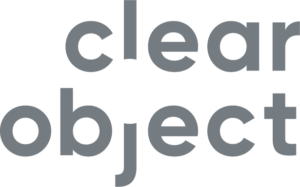It’s been just over a year ago that IBM brought its Watson AI technology into the requirements management mix for IBM Engineering Lifecycle Management, a.k.a. IBM ELM. So, all this time later, how is the combination working?
Quite well, thank you.
If there’s anything product engineering teams must deal with on an increasing basis, it’s an onslaught of data and honing-in on requirements that get more complex as digital products become more connected. Add things to the product development equation like validation, quality assurance, cost control and time-to-market, and it’s imperative that teams get requirements right on their initial try. If a product engineering team doesn’t hit the requirements mark? According IBM, 75% of product development projects fail due to poor requirements. Worse, according to IEEE Transactions on Software Engineering, it costs 200 times more to fix defects in a launched product than it does to find and correct issues during the requirements phase.
Those are just some of the reasons IBM made Watson AI its centerpiece for requirements management and accuracy in IBM ELM. It’s also why IBM Engineering recently launched its Requirements Quality Assistant (RQA) solution for product engineering leaders and C-level executives, who can use RQA to share the various ways they put AI technology to work in their product and software engineering processes.
As IBM envisioned for IBM ELM and its Requirements component, Watson AI would better enable product engineering teams to improve the requirements definition process first by flagging incomplete and ambiguous requirements, and second, by showing the requirements’ author how to modify them. RQA in particular uses Watson AI to improve the completeness, consistency and accuracy of requirements for product development, and is pre-trained to detect key quality indicators in line with the INCOSE Guidelines for Writing Good Requirements.
Given the reams of data that product engineering teams must manage for requirements, Watson AI continues to prove its worth by streamlining the requirements management process and making it more intelligent. For instance, in conjunction with RQA, imagine trying to achieve this without Watson AI:
• Analyze documents by the tens of thousands (or more) to train Watson, which would require a human several years to do.
• Put more than 30 years of practical engineer experience at the fingertips of all product engineering team members and other product stakeholders.
• Reduce the time engineers spend searching for expert knowledge by 75%.
In IBM ELM, requirements management powered by AI (DOORS/DOORS Next/RQA) also works as advertised, allowing product engineering teams to “Work more effectively across disciplines, time zones, and supply chains.”
Best practices for requirements management and product engineering
No matter the industry, IBM’s view for increasingly complex connected products is that deeper visibility into product engineering changes, greater insights into data, and shared tools for global collaboration are the best benchmarks for authoring product requirements. With Watson AI, Watson IoT, IBM ELM, RQA, and DOORS/DOORS Next all in mind, IBM cites four criteria as being critical to requirements management and successful outcomes on a first attempt:
Requirements traceability to link individual artifacts to test cases for total visibility of changes in product engineering requirements as they happen.
Variant management to digitally manage the entire version and variant process while monitoring the progression of the system through a shared dashboard.
Engineering compliance that incorporates industry standards and regulations into requirements to achieve compliance early on, notably by building compliance into the product engineering lifecycle from end-to-end.
Agile management that streamlines product engineering processes and enables global collaboration and a single source of truth, including showing teams the “value of their efforts” in real time.
Watson AI is the success thread to these best-practices elements in that it helps product engineering teams reduce errors (requirements analysis takes up only 2% of total design time, per IBM), reduce costs by reducing errors and rework, and strengthen requirements overall to develop and release new products to market before anyone else. (IBM has a nice 4-minute video available titled “IBM Watson IoT Requirements Quality Assistant Preview,” which recaps these and other benefits. Watch the video here.)
Taken together at this point, Watson AI, IBM ELM and now RQA are proving to be everything IBM intended them to be for enhanced requirements management.
IBM ELM Managed Services by ClearObject
In tandem with IBM’s ELM effort, IBM worked with ClearObject to create the cloud-based offering for IBM ELM Managed Services by ClearObject, which features a complete integration layer for ELM structured by IBM. With end-to-end integration between core engineering functions for Requirements, Test, Workflow Management, and Systems Design (MBSE), these managed services give engineering product development teams a hosted ELM-based quality requirements management configuration and solid architecture managed across the lifecycle of enterprise scale. As Software as a Service (SaaS), entire product development organizations can also participate globally and evaluate developed concepts without having to dedicate their own IT resources. In all, ClearObject’s IBM ELM managed services help engineering leaders limit risk, control costs and drive innovation.
Contact Us
ClearObject is a digital transformation leader in Internet of Things (IoT) Engineering and Analytics. As IBM Watson IoT and Google Cloud Business Partners, we deliver global embedded software development environments for our customers, and design and deliver unique data analytics digital products that help them recognize the value of their data. Our objective is clear: help the world’s best companies build intelligence into their products and gain intelligence from them. The future is clear. Do you see it?
(image: IBM)
#ibmelm #productengineering #productdevelopment #softwareengineering #requirementsmanagement #managedservices
